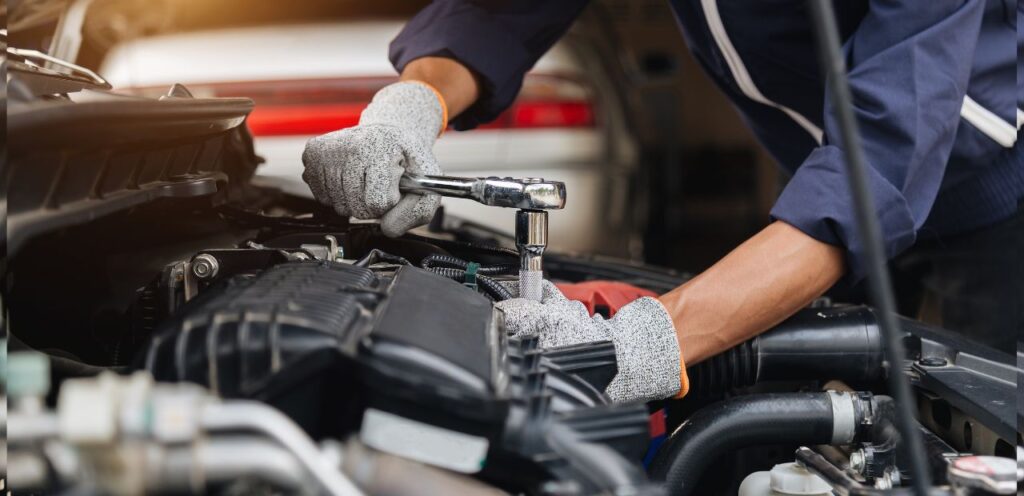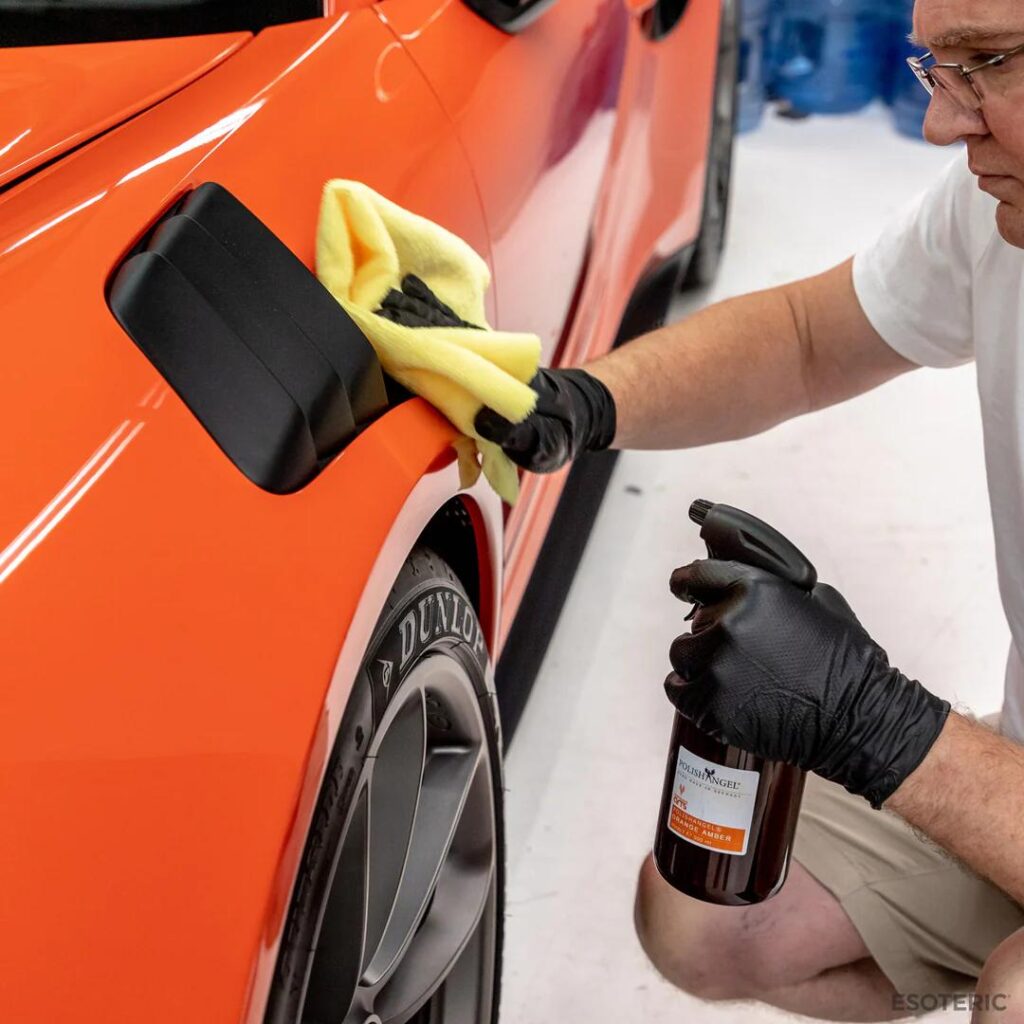As an Amazon Associate, I earn from qualifying purchases
To Clean Car Upholstery Your car’s interior tells a story. Coffee spills from rushed morning commutes, muddy paw prints from weekend adventures, and the gradual accumulation of dust and grime all leave their mark on your upholstery. While these signs of life are inevitable, they don’t have to be permanent fixtures in your vehicle.
Car upholstery cleaning goes beyond simple aesthetics—it’s about creating a healthier, more comfortable environment for you and your passengers. Clean upholstery eliminates allergens, reduces odors, and preserves the integrity of your car’s interior materials. Whether you’re driving a brand-new luxury sedan or a well-loved family SUV, proper upholstery maintenance can significantly extend the life of your vehicle’s interior.
Many car owners underestimate the impact that clean upholstery has on their daily driving experience. Fresh, well-maintained seats and interior surfaces create a more pleasant atmosphere, reduce stress during commutes, and even contribute to better air quality inside your vehicle. The good news? With the right approach, tools, and techniques, you can achieve professional-level results from the comfort of your own driveway.
This comprehensive guide will walk you through everything you need to know about car upholstery cleaning, from identifying your upholstery type to selecting the best products and mastering the step-by-step cleaning process that will leave your interior looking and smelling like new.

Table of Contents
- 1 Why It’s Important to Clean Car Upholstery
- 2 How to Clean Car Upholstery (Step-by-Step)
- 3 Best Tools & Products for Cleaning Car Upholstery
- 4 How to Clean Different Upholstery Materials
- 5 Maintenance Tips for Long-Lasting Results
- 6 Frequently Asked Questions Abot Clean Car Upholstery.
- 7 Transform Your Driving Experience with Clean Upholstery
- 8 Finish Strong:
Why It’s Important to Clean Car Upholstery
Regular car upholstery cleaning serves multiple purposes that extend far beyond mere appearance. Understanding these benefits can help you appreciate why this maintenance task deserves a spot on your regular car care schedule.
Health and Air Quality Benefits
Your car’s upholstery acts like a giant filter, trapping dust, pollen, pet dander, and other airborne particles over time. Without regular cleaning, these allergens accumulate and can trigger respiratory issues, especially for sensitive individuals. Bacteria and mold can also develop in damp or soiled upholstery, creating potential health hazards for everyone who enters your vehicle.
Odor Prevention and Elimination
Unpleasant odors in cars often originate from the upholstery. Spilled beverages, food particles, pet accidents, and everyday use create lingering smells that can make your driving experience uncomfortable. Regular cleaning prevents these odors from setting in permanently and helps maintain a fresh, welcoming interior environment.
Aesthetic and Comfort Enhancement
Clean upholstery dramatically improves your car’s overall appearance and creates a more comfortable driving experience. Dirt, stains, and grime make even the most luxurious interiors look dated and neglected. Fresh, clean seats and surfaces enhance your pride in vehicle ownership and create a more pleasant environment for daily commutes and long road trips.
Financial Protection
Perhaps most importantly, regular upholstery cleaning protects your investment. Clean, well-maintained interiors significantly boost resale value when it’s time to sell or trade your vehicle. Potential buyers notice interior condition immediately, and pristine upholstery can add thousands of dollars to your car’s worth. Additionally, preventive cleaning costs far less than professional restoration or replacement of damaged upholstery.
How to Clean Car Upholstery (Step-by-Step)
Effective car upholstery cleaning requires a systematic approach. Following these steps ensures thorough cleaning while protecting your upholstery materials from damage.
Step 1: Vacuum Thoroughly
Begin with a comprehensive vacuuming session using a high-powered vacuum cleaner equipped with various attachments. Remove floor mats and any loose items from your car first. Use the crevice tool to reach tight spaces between seats, along seat edges, and in cup holders. The brush attachment works well for seat surfaces, while the upholstery tool is perfect for cushioned areas.
Pay special attention to areas where crumbs and debris commonly accumulate: seat cracks, under seat cushions, door pockets, and around seat belts. This initial vacuuming removes loose dirt and debris that could turn into mud when mixed with cleaning solutions.
Step 2: Identify Your Upholstery Material
Different upholstery materials require specific cleaning approaches. Check your owner’s manual or examine the upholstery closely to determine whether you’re working with fabric, leather, synthetic leather, or vinyl. This identification is crucial because using the wrong cleaning products can cause permanent damage, discoloration, or deterioration.
Look for care labels or tags that might indicate specific cleaning requirements. When in doubt, test any cleaning product in an inconspicuous area first.
Step 3: Choose the Appropriate Cleaning Solution
Select cleaning products specifically designed for your upholstery type. Fabric upholstery typically requires foam-based or liquid fabric cleaners, while leather needs specialized leather cleaners that won’t strip natural oils. Synthetic materials often work well with all-purpose upholstery cleaners, but always verify compatibility first.
Avoid household cleaners like dish soap or laundry detergent, which can leave residues, cause discoloration, or damage protective coatings on your upholstery.
Step 4: Apply the Solution and Scrub
Apply your chosen cleaning solution according to the manufacturer’s instructions. Work in small sections to prevent the cleaner from drying before you can work with it. Use appropriate tools for scrubbing: soft-bristled brushes for fabric, microfiber cloths for leather, and upholstery brushes for textured materials.
Scrub gently in circular motions, allowing the cleaner to penetrate stains and lift embedded dirt. Avoid oversaturating the upholstery, which can lead to mold growth or damage to underlying foam padding.
Step 5: Wipe Clean and Allow to Dry
Remove cleaning residue with clean, damp microfiber cloths, frequently rinsing the cloths to avoid redistributing dirt. Ensure all cleaning product residue is removed, as leftover chemicals can attract dirt and cause rapid re-soiling.
Allow upholstery to dry completely before using your vehicle. Open windows and doors to promote air circulation, and consider using fans to speed the drying process. Proper drying prevents mold and mildew growth.
Step 6: Condition (For Leather Upholstery)
Leather upholstery requires conditioning after cleaning to restore natural oils and maintain flexibility. Apply a high-quality leather conditioner according to product instructions, working it into the leather with a clean microfiber cloth. This step prevents cracking and keeps leather supple and attractive.
Best Tools & Products for Cleaning Car Upholstery
Success in car upholstery cleaning depends heavily on using the right tools and products. Investing in quality equipment makes the job easier and produces better results.
Essential Vacuum Equipment
A powerful vacuum cleaner with strong suction is your most important tool. Handheld car vacuums work for light maintenance, but plug-in models or shop vacuums provide superior cleaning power for deep cleaning sessions. Essential attachments include crevice tools for tight spaces, brush attachments for agitating dirt, and upholstery tools for cushioned surfaces.
Cleaning Products by Material Type
For fabric upholstery, look for foam-based cleaners that lift dirt without oversaturating materials. Products containing enzymes work particularly well for organic stains like food and beverages. Leather requires pH-balanced cleaners that clean without stripping natural oils, followed by conditioners that restore flexibility and appearance.
Synthetic upholstery often responds well to all-purpose cleaners, but always test compatibility first. Avoid products containing harsh chemicals, bleach, or abrasives that can damage synthetic materials.
Scrubbing and Application Tools
Soft-bristled brushes help agitate cleaning solutions and lift embedded dirt from fabric upholstery. Boar’s hair brushes work excellently for leather cleaning, while synthetic brushes suit most other materials. Microfiber cloths are essential for wiping, buffing, and applying conditioners—they’re lint-free and won’t scratch delicate surfaces.
Consider investing in spray bottles for even application of cleaning solutions and buckets for rinse water when working with multiple cloths.
Specialty Tools
Steam cleaners can be effective for fabric upholstery but require careful use to avoid oversaturation. Carpet extractors work well for heavily soiled fabric seats. For leather work, specialized leather cleaning cloths and conditioning applicators ensure even coverage and professional results.
How to Clean Different Upholstery Materials
Each upholstery material requires a tailored approach to achieve optimal cleaning results without causing damage.
Fabric Upholstery Cleaning
Fabric car upholstery encompasses various materials, from basic cloth to high-end textiles. Start by checking the fabric type and any care instructions. Most fabric upholstery responds well to foam-based cleaners that lift dirt without oversaturating the material.
Apply the cleaner evenly across the surface, working in sections small enough to complete before the product dries. Use a soft-bristled brush to gently agitate the cleaner, working it into the fabric fibers. Pay extra attention to high-wear areas like seat bolsters and headrest contact points.
Remove the cleaner with clean, damp cloths, extracting as much moisture as possible to prevent mold growth. For stubborn stains, repeat the process, but avoid aggressive scrubbing that might damage the fabric weave.
Leather Upholstery Care
Leather upholstery requires gentle, specialized care to maintain its appearance and longevity. Begin with a leather-specific cleaner that won’t strip natural oils or damage the leather’s protective finish. Apply the cleaner to a microfiber cloth rather than directly onto the leather to control application.
Work the cleaner into the leather with gentle, circular motions, focusing on areas with visible soiling or wear. Use a clean, slightly damp cloth to remove cleaner residue, then allow the leather to dry naturally away from direct sunlight or heat sources.
Once dry, apply a quality leather conditioner to restore moisture and flexibility. This step is crucial for preventing cracking and maintaining the leather’s suppleness over time.
Synthetic Upholstery Maintenance
Synthetic leather and vinyl upholstery offer durability and easy maintenance but still require proper care. These materials typically handle cleaning well but can be damaged by harsh chemicals or abrasive tools.
Use mild, all-purpose cleaners specifically designed for automotive synthetic materials. Test any new product in an inconspicuous area first, as some synthetic materials can discolor or become glossy with incorrect cleaners.
Apply the cleaner with a microfiber cloth, working gently to avoid scratching or scuffing the surface. Remove all cleaner residue with a clean, damp cloth, then dry thoroughly to prevent water spots or streaking.
Maintenance Tips for Long-Lasting Results
Proper maintenance extends the time between deep cleaning sessions and keeps your upholstery looking fresh consistently.
Regular Vacuuming Schedule
Vacuum your car’s interior weekly if you use your vehicle daily, or bi-weekly for occasional drivers. Regular vacuuming prevents dirt from becoming embedded in upholstery fibers and makes spot cleaning more effective when spills occur.
Immediate Spill Response
Address spills and stains immediately to prevent permanent damage. Blot liquids with clean cloths rather than rubbing, which can spread stains or push them deeper into materials. Keep a small supply of appropriate cleaning products in your car for emergency spot treatments.
Protective Measures
Consider using seat covers in high-wear areas or when transporting pets, children, or messy cargo. Scotchgard or similar fabric protection products can help repel spills on fabric upholstery, making cleanup easier.
Environmental Protection
Park in shaded areas when possible to protect upholstery from UV damage and excessive heat. Use sunshades to reduce interior temperature and prevent fading or cracking of upholstery materials.
Frequently Asked Questions Abot Clean Car Upholstery.
Can I use regular household cleaners on car upholstery?
Avoid using regular household cleaners on car upholstery. These products often contain harsh chemicals, bleach, or high pH levels that can damage automotive materials, cause discoloration, or leave residues that attract dirt. Always use cleaners specifically designed for automotive upholstery to ensure compatibility and effectiveness.
How often should I clean my car’s upholstery?
Deep clean your car’s upholstery every 3-6 months, depending on usage. Daily drivers in dusty environments or families with children and pets may need more frequent cleaning. Regular vacuuming weekly helps maintain cleanliness between deep cleaning sessions. Leather upholstery should be conditioned every 3-4 months regardless of cleaning frequency.
How do I remove specific stains from car upholstery?
For coffee or beverage stains, blot immediately and treat with appropriate upholstery cleaner. Ink stains often respond to isopropyl alcohol applied with a cotton swab, working from outside the stain inward. Grease stains may require enzyme-based cleaners that break down oils. Always test stain removal methods in inconspicuous areas first and work gently to avoid spreading stains.
Can I steam clean car upholstery?
Steam cleaning can be effective for fabric upholstery when used carefully. The high temperature kills bacteria and lifts embedded dirt, but oversaturation can damage padding or promote mold growth. Avoid steam cleaning leather, as excessive heat and moisture can cause cracking or discoloration. If using steam, work quickly and ensure thorough drying afterward.
How can I prevent odors in my car upholstery?
Prevent odors by addressing spills immediately, maintaining regular cleaning schedules, and ensuring proper ventilation. Use automotive fabric fresheners sparingly, as heavy fragrance can mask rather than eliminate odors. Keep windows slightly cracked when parked safely to promote air circulation. For persistent odors, enzyme-based cleaners that break down odor-causing bacteria are most effective.
Transform Your Driving Experience with Clean Upholstery
Regular car upholstery cleaning represents one of the most rewarding maintenance tasks you can perform for your vehicle. The combination of improved aesthetics, enhanced comfort, better air quality, and protected resale value makes this investment of time and effort worthwhile for every car owner.
Remember that consistency matters more than perfection. Regular maintenance with proper techniques and quality products will keep your upholstery looking and smelling fresh while preventing the buildup of dirt, stains, and odors that require expensive professional intervention.
Start with a thorough assessment of your current upholstery condition, invest in appropriate tools and products for your specific materials, and establish a regular cleaning schedule that fits your lifestyle. Your passengers will notice the difference, and you’ll enjoy the pride that comes with maintaining a clean, fresh vehicle interior.
Take action this weekend by giving your car’s upholstery the attention it deserves. Your investment in proper cleaning and maintenance today will pay dividends in comfort, health, and vehicle value for years to come.
Finish Strong:
Taking the time to clean your car upholstery isn’t just about aesthetics—it’s about preserving your vehicle’s comfort and value. By investing a little effort now, you’ll ensure a cleaner, more enjoyable driving experience for yourself and your passengers. Whether it’s a quick touch-up or a deep clean, every step you take contributes to a more comfortable and healthier environment on the road. So, don’t wait any longer—give your car the care it deserves, and enjoy the satisfaction of driving a fresh, well-maintained vehicle every time you get behind the wheel. Your car, your comfort, your pride
Meta title
How to Clean Car Upholstery: Complete Guide for Fresh Interiors
Meta description
Learn professional car upholstery cleaning techniques for fabric, leather, and synthetic materials. Step-by-step guide with tools, tips, and maintenance advice.
As an Amazon Associate, I earn from qualifying purchases


